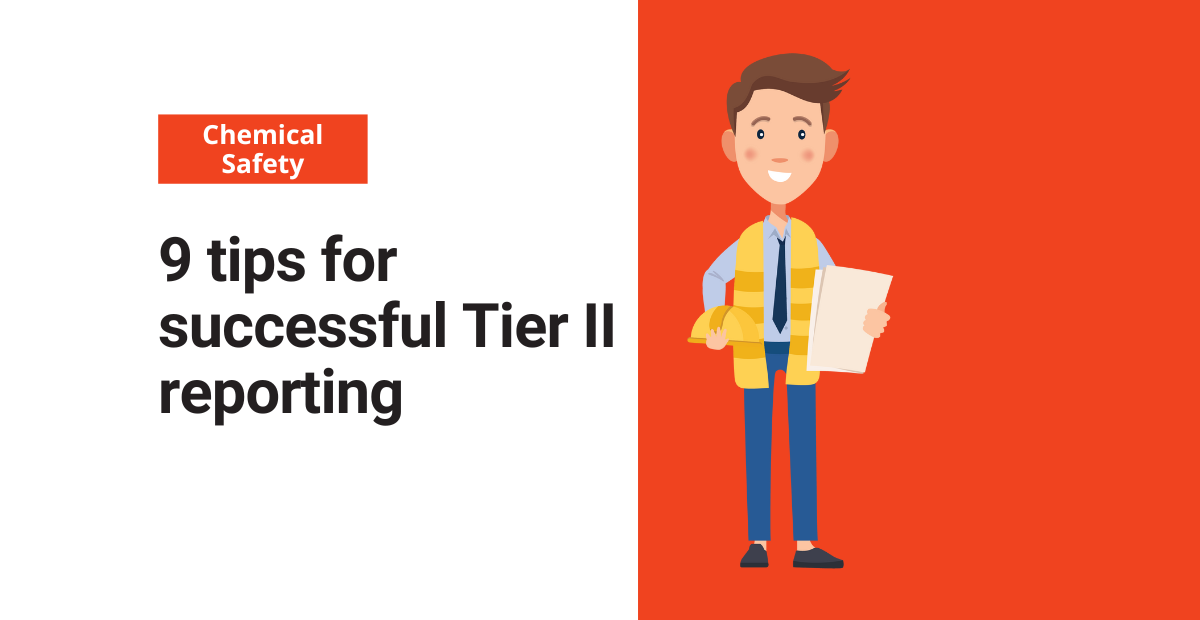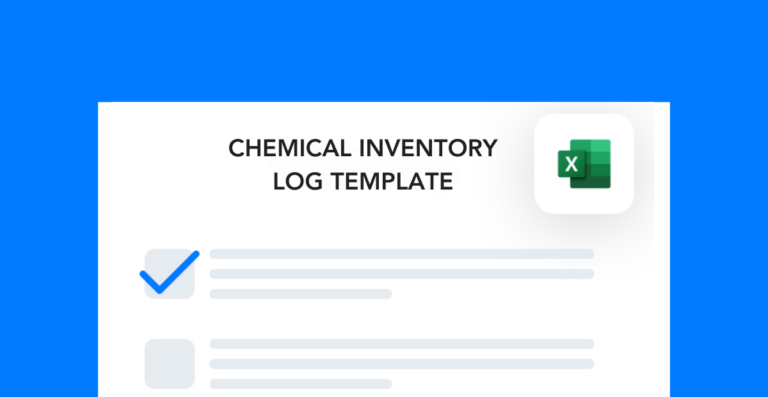Tier II reporting is an annual federal requirement from the EPA that applies to facility owners or operators who store hazardous chemicals. The EPA uses Tier II reporting to track and enforce rules related to storing hazardous materials in your facility.
The type of chemical and the amount stored are what determine the need to report. It’s important to note that when a chemical being stored meets or exceeds the reporting threshold at any one time during the reporting period, it needs to be included. If your facility stores hazardous materials onsite for any length of time, then you have to know what to report.
Tier II reporting steps
Avoiding unnecessary stress that comes with non-compliance and monetary fines that can disrupt normal operations. Here are a few tips to help you stay on top of Tier II reporting.
Review historical reports
For established facilities, locate the last report filed for the facility. Check your in-house facility records to find the report. Review and compare the information to what you currently store onsite and the quantity. Involve the procurement department or inventory manager and operations team who may know where to locate records of past chemical orders.
Build the hazardous chemical inventory list and compile SDSs
List and quantify all hazardous chemicals as defined under 29 CFR 1910.1200(c). The general rule is that for any chemical that requires you to prepare or have available an SDS then it may be reportable. Build the inventory list based on all hazardous chemicals present at the facility during the reporting period, Jan 1 – Dec 31. Account for commonly overlooked chemicals such as;
– Sulfuric in lead-acid batteries common in forklifts,
– Bulk fuel storage, and
– Stored chemicals used throughout the facility like oils or compressed gas cylinders.
Compile and organize the associated SDSs for the hazardous chemicals.
Free template!
Use this simple template to keep an updated log of all the chemicals you have onsite.
Know what chemicals are excluded for tier II reporting
Some chemicals don’t fall under reporting requirements. Chemicals used in research labs or hospitals, and for personal, family, or household use are among others. For complete information, review the exemptions from EPCRA Sections 311 and 312.
Convert all chemicals to pounds
Once you have compiled the chemical list, review the quantity. If the chemical quantity information is not in pounds, convert the gas or liquid amount to weight in pounds. Then, multiply by the appropriate density factor to convert volume to pounds. Moreover, the EPA provides a helpful conversion example in their Tier II submission tutorial.
Know the tier II reporting thresholds
The hazardous chemicals fit into three general reporting threshold criteria:
1) Hazardous Chemicals
2) Extremely Hazardous Substances (EHSs)
3) Diesel and gasoline at retail gas stations in underground storage tanks
The reporting threshold for hazardous chemicals (non-EHSs) is at or above 10,000 pounds. Some of the hazardous chemicals are considered EHSs which have significantly lower reporting thresholds due to their toxicity.
Consequently, you can find these chemicals in 40 CFR Part 355 Appendix A and Appendix B, along with their Threshold Planning Quantity (TPQ). Specifically, the EHS chemical reporting threshold is equal to or over 500 pounds or over the TPQ (whichever is less). Furthermore, for diesel and gasoline stored in UST at retail gas stations, the reporting threshold is over 100,000 and 75,000 pounds, respectively.
Understand state-specific reporting requirements
Be aware of specific reporting requirements – some states may have unique requirements for reporting and submitting the Tier II inventory form and the state reporting form or format. Be sure to check out your state’s reporting requirements; the EPA provides a useful link to each state’s reporting requirements.
Prepare facility information and define the keeper of the Tier II reporting process
Firstly, gather the necessary information about your facility and who the designated point of contact will be. Then, designate a position or department as the owner of the Tier II reporting process and develop an SOP. Basically, this will help facilitate a smooth reporting process in the instance of turnover. The designated position or department is responsible to ensure that the facility meets the March 1st filing deadline.
Include Tier II reporting recipients at the time of submission
Check for the designated recipients of the Tier II form. A copy must be sent to your State Emergency Response Commission, Local Emergency Planning Committee, and the fire department with jurisdiction over your facility.
Submit the report
The EPA has recently released a new version of Tier2 Submit which is available starting in Reporting Year 2022. Specifically, the free software tool helps to assist States, Tribes, and Territories to collect Hazardous Chemical and Extremely Hazardous Chemical (EHS) Information. Make sure to submit the Tier II report before March 1.
Getting additional information
We hope that the information provided will help you successfully complete your Tier II reporting and act as a quick reference for anyone learning the reporting process. If there are any questions regarding your Tier II reporting requirements, then reach out to your State’s Tier II Administration points of contacts.




